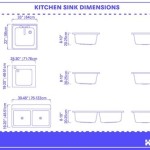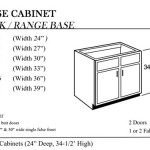Small Dish Rack For Inside Sink: A Practical Kitchen Solution
A small dish rack designed for use inside the sink represents a compact and efficient solution for managing dishwashing needs in kitchens of varying sizes. These racks offer a space-saving alternative to traditional countertop dish racks, maximizing available surface area and maintaining a tidy kitchen environment. The design typically incorporates features that promote quick drying and prevent water accumulation, enhancing hygiene and reducing the risk of bacterial growth. This article will explore the advantages, design considerations, materials, and selection criteria associated with small dish racks optimized for placement within the sink basin.
Space Optimization and Efficient Kitchen Management
The primary benefit of a small dish rack for inside the sink lies in its ability to conserve valuable countertop space. In smaller kitchens, where every inch of workspace counts, these racks provide a dedicated area for drying dishes without encroaching upon food preparation zones. By positioning the rack within the sink, excess water drips directly into the drain, eliminating the need for a separate draining board and preventing messy puddles from forming on the counter. This streamlined approach to dishwashing contributes to a cleaner, more organized, and more functional kitchen.
The reduced footprint of these racks also simplifies kitchen cleaning. With fewer items cluttering the countertop, wiping down surfaces becomes faster and more efficient. This is particularly beneficial for individuals with busy schedules who prioritize maintaining a clean and hygienic kitchen environment without excessive effort. Furthermore, the absence of a bulky dish rack on the counter can visually declutter the space, creating an illusion of greater spaciousness and enhancing the overall aesthetic appeal of the kitchen.
Beyond individual households, the compact design of in-sink dish racks makes them suitable for various environments, including apartments, RVs, and boats where space is at a premium. Their portability also allows for easy relocation and storage when not in use, further contributing to their versatility and adaptability to different living situations.
Design and Functionality Considerations
The design of a small dish rack for inside the sink necessitates a careful balance between size, capacity, and stability. The dimensions of the rack must be compatible with the dimensions of the sink basin, ensuring a secure and stable fit without obstructing the drain. The rack should be designed to accommodate a sufficient number of dishes, utensils, and glassware to meet the user's needs without overcrowding or compromising drying efficiency.
Effective water drainage is another crucial design element. The rack should incorporate strategically placed openings and channels to facilitate the rapid and complete drainage of water, preventing stagnant puddles from forming and minimizing the risk of mold and mildew growth. Some models feature sloped surfaces that direct water towards the drain, further enhancing drainage performance. The spacing between the dish slots should be sufficient to allow for adequate airflow, promoting faster and more thorough drying.
Stability is paramount to prevent the rack from tipping over or collapsing under the weight of the dishes. The rack should be constructed from durable materials and feature a robust frame that can withstand the rigors of daily use. Non-slip feet or other stabilizing mechanisms can further enhance stability, particularly on smooth or uneven sink surfaces. The design should also consider the ease of cleaning, with smooth surfaces and minimal crevices to prevent the accumulation of food particles and debris. Some models feature removable components that can be easily washed in the dishwasher.
Utensil holders are a common and valuable addition to in-sink dish racks. These holders provide a dedicated space for drying silverware, cooking utensils, and other small items, preventing them from sliding around or falling off the rack. The holders should be designed to allow for adequate drainage and ventilation, preventing water from pooling and promoting quick drying. Some models feature adjustable or removable utensil holders, allowing for customization and flexibility to accommodate different types of utensils.
Material Selection and Durability
The materials used in the construction of a small dish rack for inside the sink significantly impact its durability, hygiene, and aesthetic appeal. Common materials include stainless steel, coated steel, and plastic, each offering a unique set of advantages and disadvantages.
Stainless steel is a popular choice due to its inherent resistance to corrosion, rust, and staining. It is also relatively easy to clean and maintain, making it a hygienic option for use in the kitchen. Stainless steel dish racks typically offer a sleek and modern aesthetic that can complement a variety of kitchen styles. However, they can be more expensive than racks made from other materials.
Coated steel offers a more affordable alternative to stainless steel. The coating, typically made of plastic or rubber, provides a barrier against rust and corrosion. However, the coating can be susceptible to chipping or peeling over time, especially with frequent use or exposure to harsh detergents. When selecting a coated steel dish rack, it is important to choose a model with a durable and well-applied coating to ensure long-lasting performance.
Plastic dish racks are lightweight, inexpensive, and easy to clean. They are also available in a wide variety of colors and styles, allowing for greater design flexibility. However, plastic can be less durable than stainless steel or coated steel, and it may be more prone to scratching or staining. When selecting a plastic dish rack, it is important to choose a model made from high-quality, BPA-free plastic to ensure its safety and longevity.
Regardless of the material chosen, it is important to ensure that the dish rack is free from sharp edges or rough surfaces that could damage dishes or pose a safety hazard. The construction should be sturdy and well-reinforced to prevent bending or deformation under the weight of the dishes.
Factors to Consider When Selecting an In-Sink Dish Rack
Selecting the appropriate small dish rack for inside the sink requires careful consideration of several factors, including sink dimensions, dishwashing habits, material preferences, and budget constraints. A thorough assessment of these factors will help ensure that the chosen rack meets the user's specific needs and provides long-lasting performance.
The dimensions of the sink basin are the most critical factor to consider. Before purchasing a dish rack, it is essential to measure the length, width, and depth of the sink basin to ensure a proper fit. The rack should fit snugly within the sink without obstructing the drain or interfering with the faucet. Some models are adjustable, allowing them to accommodate sinks of varying sizes. It is also important to consider the height of the rack to ensure that it does not interfere with the overhead cabinets or other fixtures.
Dishwashing habits also play a significant role in the selection process. Individuals who frequently wash large quantities of dishes may require a larger rack with a higher capacity. Those who primarily wash smaller items may prefer a more compact rack with specialized compartments for utensils and glassware. The frequency of dishwashing should also be considered, as more frequent use may necessitate a more durable and corrosion-resistant rack.
Material preferences are often dictated by personal aesthetic preferences and budget considerations. Stainless steel dish racks offer superior durability and a modern aesthetic, but they can be more expensive than coated steel or plastic models. Coated steel racks provide a good balance of durability and affordability, while plastic racks are the most budget-friendly option. The choice of material should also consider the ease of cleaning and maintenance, as well as the potential for staining or discoloration.
Finally, budget constraints should be taken into account when selecting an in-sink dish rack. While it is tempting to opt for the cheapest option available, it is important to prioritize quality and durability to ensure long-lasting performance. Investing in a slightly more expensive rack made from higher-quality materials can save money in the long run by reducing the need for frequent replacements.

Stainless Steel Adjustable In Sink Dish Rack The Vermont Country

Designs For Small Kitchens Dish Racks Core77

Small Dish Drying Rack In Sink Adjustable 14 96 To 20 59 Expandable 304 Stainless Steel Metal Drainer Organizer With

Kraus Workstation Kitchen Sink Dish Drying Rack Drainer And Utensil Holder In Stainless Steel Kdr 3 The Home

Stainless Steel Adjustable In Sink Dish Rack The Vermont Country

Yoneston Dish Drying Rack 2 Tier With Water Tray Utensil Holder Cutting Board For Small Space Kitchen Counter Or Sink Side

Kraus Workstation Kitchen Sink Dish Drying Rack Drainer And Utensil Holder In Stainless Steel Kdr 3 The Home

Sink Dish Drying Rack Adjustable 304 Stainless Steel Metal Expandable Small Size

11 Best Dish Racks 2025 The Strategist

Sink Dish Drying Rack Adjustable 304 Stainless Steel Metal Expandable Small Size







